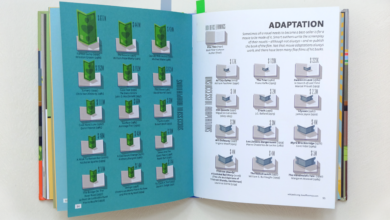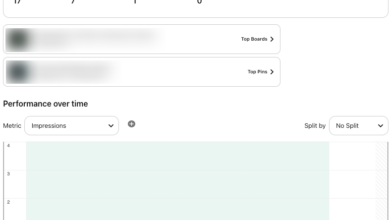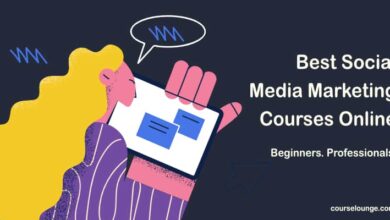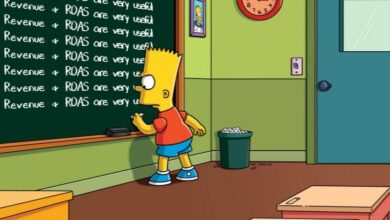
LinkedIn Sponsored Content Targeted Ads Solutions
LinkedIn sponsored content targeted advertising solutions are rapidly becoming a crucial tool for businesses looking to connect with their ideal audience. This detailed exploration dives into the various formats, targeting options, optimization strategies, and performance metrics associated with effective campaigns on LinkedIn. From crafting compelling ad copy to analyzing campaign results, this guide provides actionable insights for maximizing your ROI.
LinkedIn offers a unique platform for businesses to reach professionals. By understanding how to target specific demographics, job titles, industries, and more, companies can effectively connect with potential customers, partners, and employees. This approach fosters meaningful engagement and drives tangible results. The guide will explore the many ways to optimize content, using the best practices and tactics available.
Introduction to LinkedIn Sponsored Content
LinkedIn Sponsored Content is a powerful tool for businesses to reach their target audience on the platform. It allows companies to promote their products, services, and thought leadership in a targeted and engaging way, driving valuable interactions and expanding their professional network. By understanding the various formats and best practices, businesses can maximize the ROI of their LinkedIn advertising efforts.Sponsored content leverages LinkedIn’s professional network to connect businesses with potential clients, partners, and collaborators.
It allows businesses to showcase their expertise and build brand awareness within the specific industries and roles they target. This targeted approach can lead to qualified leads, increased brand visibility, and ultimately, a more robust professional presence on LinkedIn.
Different Formats of Sponsored Content
LinkedIn offers diverse formats to cater to various marketing objectives. Businesses can choose from text ads, image ads, video ads, and carousel ads. Each format has its unique characteristics and strengths.
- Text Ads: These are concise, typically brief descriptions highlighting a key value proposition. They’re excellent for driving traffic to landing pages or specific web content. Their simplicity makes them ideal for driving quick conversions.
- Image Ads: These ads utilize compelling visuals to capture attention and convey information. Images can showcase products, services, or company culture, making them suitable for building brand recognition and awareness.
- Video Ads: Video content is highly engaging on LinkedIn. Short, impactful videos can convey complex information, showcase expertise, or highlight company culture in a dynamic way. They’re especially effective for demonstrating product features or telling brand stories.
- Carousel Ads: These ads present multiple images or videos in a scrolling format. They allow for a greater depth of information and visual appeal, ideal for presenting multiple products or showcasing a company’s range of offerings. They’re well-suited for product demonstrations or detailed service descriptions.
Examples of Successful LinkedIn Sponsored Content Campaigns
Many successful campaigns highlight the power of targeted advertising. For example, a software company that targeted specific job titles within the tech industry saw a significant increase in qualified leads. Another company focused on showcasing thought leadership through video ads and saw a notable boost in brand visibility and engagement. A company focusing on recruiting used a carousel format to showcase various job openings, and saw increased applicant engagement.
These examples demonstrate the efficacy of tailoring content to specific LinkedIn audiences.
Best Practices for Engaging Sponsored Content
Creating impactful sponsored content requires careful consideration. The key is to understand your target audience and craft messages that resonate with their professional needs and interests.
LinkedIn sponsored content targeted advertising solutions are powerful, but to truly maximize your ROI, you need to understand your audience’s online behavior. Think about how Instagram hashtag analytics can help you tailor your message. For example, using tools like instagram hashtag analytics maximize your reach , you can discover which hashtags resonate most with your ideal clients, then translate that insight back to your LinkedIn ad copy.
This strategic approach will help you reach the right people with the right message, driving more engagement and conversions with your LinkedIn sponsored content.
- Target Audience Segmentation: Thorough audience segmentation is crucial. Identifying the specific roles and industries to target allows for tailored messaging that resonates more effectively. Avoid generic approaches.
- High-Quality Visuals: Professional and high-quality visuals are essential for capturing attention and conveying the message effectively. Clear, sharp images and videos are vital for making a lasting impression.
- Compelling Call to Action: A clear and concise call to action is critical for driving engagement and conversions. Encourage users to take the desired next step, whether it’s visiting a website, downloading a resource, or contacting the company.
- Consistent Branding: Maintain consistent branding throughout the sponsored content to reinforce brand recognition and build trust with the target audience.
Sponsored Content Formats Overview
| Format | Typical Characteristics |
|---|---|
| Text Ads | Concise, focused on key value propositions, excellent for driving traffic to landing pages. |
| Image Ads | Visually engaging, showcasing products, services, or company culture. Effective for building brand recognition. |
| Video Ads | Dynamic and engaging, suitable for product demonstrations, showcasing expertise, or telling brand stories. |
| Carousel Ads | Present multiple images/videos, ideal for showcasing a range of products or detailed service descriptions. |
Strategies for Optimizing LinkedIn Sponsored Content

LinkedIn Sponsored Content offers a powerful platform for businesses to connect with their target audience. Effective optimization strategies are crucial for maximizing the return on investment (ROI) and achieving specific business goals. This section dives into strategies tailored to various business objectives, focusing on ad copy styles, calls to action, and A/B testing.Optimizing LinkedIn Sponsored Content campaigns requires a nuanced understanding of the platform’s audience and the desired outcomes.
By tailoring ad copy, calls to action, and testing strategies, businesses can significantly improve their campaign performance and achieve their marketing objectives, whether it’s generating leads, boosting brand awareness, or attracting top talent.
Different Objectives, Different Approaches
Different business objectives require different approaches to sponsored content. For example, a campaign focused on lead generation will necessitate a different approach compared to one aiming to increase brand awareness. Understanding the specific goals and aligning the content accordingly is key.
Ad Copy Styles for Specific Objectives
The tone and style of your ad copy should directly reflect the campaign’s objective. For lead generation, focus on problem-solving and value propositions. Highlight how your product or service addresses a specific pain point for the target audience. A strong call to action, such as requesting a demo or downloading a resource, is crucial. For brand awareness campaigns, focus on building a positive brand image.
Use compelling visuals and messaging that resonates with your target audience’s values. Keep the language engaging and informative. Recruitment campaigns require a different approach. Use s related to the position, highlight company culture, and showcase company benefits. Use visuals that showcase the workplace environment.
LinkedIn sponsored content targeted advertising solutions are fantastic, but you need a strong foundation. Crucially, you need to ensure your campaigns are reaching the right audience. This often involves setting up the Meta Pixel (formerly Facebook Pixel), which is essential for tracking conversions and optimizing your campaigns. For a comprehensive guide on how to set up the Meta Pixel, check out this helpful resource: how to set up meta pixel formerly facebook pixel.
By understanding how to properly implement the pixel, you’ll significantly enhance the effectiveness of your LinkedIn sponsored content campaigns.
Crafting Compelling Calls to Action
Crafting a compelling call to action (CTA) is vital for driving engagement and conversions. CTAs should be clear, concise, and directly related to the ad copy and objective. For lead generation, examples include “Request a Demo,” “Download the Whitepaper,” or “Schedule a Consultation.” For brand awareness, the call to action could be “Learn More,” “Visit Our Website,” or “Follow Us.” Effective CTAs clearly communicate the next step for the user and encourage them to engage with your content.
A/B Testing Strategies for Sponsored Content
A/B testing is essential for optimizing your LinkedIn Sponsored Content campaigns. By testing different variations of ad copy, visuals, and calls to action, you can identify what resonates best with your target audience. A/B tests should be designed with specific metrics in mind, such as click-through rates (CTR), engagement rates, and conversions. Testing different headlines, images, and CTAs can lead to significant improvements in campaign performance.
A/B testing can be conducted in iterations and focused on individual components, such as headlines, images, or calls to action.
Actionable Tips for A/B Testing
- Define clear objectives for each A/B test.
- Select a statistically significant sample size.
- Vary only one element at a time in each test.
- Track relevant metrics for each variation.
- Analyze the results and iterate based on the data.
Examples of Effective Calls to Action and Impact
A call to action like “Request a Demo” often leads to a higher conversion rate compared to a generic call to action like “Learn More.” A well-designed CTA will align with the ad copy, targeting specific objectives, and enhancing the user experience. For example, if a company is targeting leads, a call to action like “Download the Guide” or “Schedule a Consultation” can significantly improve conversion rates compared to a general call to action like “Visit Our Website.” If a company is focused on brand awareness, a call to action like “Follow Us on LinkedIn” or “Visit Our Website” will likely have a greater impact on brand visibility.
The best CTAs are always tailored to the specific campaign goals and target audience.
Measuring and Analyzing Campaign Performance
Understanding the effectiveness of your LinkedIn Sponsored Content campaigns is crucial for optimizing future efforts and maximizing ROI. Tracking key metrics provides insights into what resonates with your target audience and helps refine your approach. This section delves into the methods for measuring campaign performance, highlighting the importance of key metrics and the available tools.Effective campaign management relies heavily on data analysis.
By meticulously monitoring campaign performance, you can identify what’s working and what needs adjustment, ultimately steering your campaigns towards greater success.
Tracking Campaign Results
Analyzing campaign results is essential to understand audience engagement and adjust strategies for optimal performance. This involves consistently monitoring key metrics to identify trends and patterns. The data gleaned from these metrics provides a clear picture of campaign success, pinpointing areas of strength and weakness.
Importance of Key Metrics
Impressions, clicks, and conversions are critical indicators of campaign performance. Impressions represent the number of times your content was displayed, clicks indicate the number of users who engaged with your content, and conversions measure the number of desired actions taken by users (e.g., visiting your website, downloading a resource). Monitoring these metrics is essential for assessing the reach, engagement, and ultimately, the effectiveness of your campaign.
Campaign Analytics Tools
Several tools are available for analyzing campaign performance on LinkedIn. These tools offer detailed insights into campaign data, enabling informed decision-making and optimization strategies. Understanding these tools and their functionalities is critical for successful campaign management.
Comparison of Campaign Analytics Tools
| Tool | Strengths | Weaknesses |
|---|---|---|
| LinkedIn Campaign Manager | Comprehensive, integrated with other LinkedIn features, readily available. | Can be overwhelming for users new to campaign management; may require more time for advanced analysis. |
| Google Analytics | Extensive tracking and analysis capabilities, integration with other Google tools, excellent for cross-platform analysis. | Requires setup and integration with LinkedIn; data might need extra steps for accurate correlation. |
| Third-party analytics platforms | Advanced reporting and visualization, custom dashboards, potential for in-depth analysis. | Usually requires subscription fees, learning curve for setup and utilization. |
This table provides a comparative overview of different analytics tools, highlighting their strengths and weaknesses. Choosing the right tool depends on your specific needs, resources, and level of campaign complexity.
Adjusting Campaign Strategies Based on Performance Data
Regularly analyzing campaign performance data allows you to make informed adjustments to your strategy. If impressions are low, consider refining your targeting parameters or adjusting the creative elements of your content. If click-through rates are low, optimize your headline, description, or call-to-action. Conversion rates can also be improved through targeted messaging, relevant content, and compelling calls to action.
The key is to continuously monitor and adapt your approach based on real-time data. This iterative process leads to better engagement, higher conversion rates, and improved campaign ROI.
Content Formats and Best Practices
LinkedIn Sponsored Content offers a diverse range of formats to engage your target audience. Understanding the strengths and weaknesses of each format is crucial for maximizing campaign effectiveness. From captivating videos to engaging articles, selecting the right format can significantly impact your campaign’s reach and results.
Different Content Formats and Their Suitability
Various content formats cater to different objectives on LinkedIn. Choosing the right format depends on whether you want to drive website traffic, generate leads, or build brand awareness. Articles, for example, are well-suited for in-depth discussions and thought leadership, while videos excel at conveying complex information or showcasing products in a dynamic way. Carousel posts allow for a more visually engaging presentation of multiple pieces of information or product features.
- Articles: Articles are ideal for demonstrating expertise and thought leadership. They allow for a comprehensive exploration of a topic, providing detailed information and fostering trust with your audience. They are effective for generating leads and driving website traffic. A well-written article with strong visuals can drive significant engagement.
- Videos: Videos are powerful for conveying complex information or showcasing products. They often capture attention more quickly than text-based content. Videos are particularly suitable for introducing new products, explaining processes, or highlighting company culture. A high-quality video with a clear message and professional editing is key.
- Carousel Posts: Carousel posts present multiple pieces of information in a visually engaging format. They are excellent for showcasing products, highlighting key features, or presenting different perspectives on a topic. They can be particularly useful for driving website traffic or increasing brand awareness.
High-Performing Content Formats on LinkedIn
Numerous high-performing content formats have demonstrated success on LinkedIn. Examples include informative articles about industry trends, engaging videos showcasing product demonstrations, and carousel posts showcasing a company’s diverse services or client testimonials. These examples illustrate the effectiveness of choosing the right format to connect with your target audience.
- Industry Trend Articles: Articles discussing emerging trends in a particular industry or sector can attract professionals seeking insights and thought leadership. This format allows for a detailed exploration of trends, positioning the company as a thought leader.
- Product Demonstration Videos: Videos showcasing a product’s features and benefits can effectively capture the audience’s attention. Clear and concise demonstrations, combined with professional editing, enhance viewer engagement.
- Carousel Posts with Client Testimonials: Carousel posts featuring client testimonials are effective in building trust and credibility. These posts present diverse perspectives, making the company seem more approachable and trustworthy.
Importance of High-Quality Visuals
High-quality visuals significantly enhance the impact of sponsored content. Visuals capture attention more effectively than text alone and make the content more engaging. They are particularly crucial for video and carousel posts. Using professional photography or videography can make your content stand out and communicate your message more effectively.
Ideal Length for Different Content Formats
The optimal length for content varies depending on the format. This table provides a general guideline for content length, ensuring engagement without overwhelming the audience.
| Content Format | Ideal Length (Approximate) |
|---|---|
| Articles | 500-1500 words |
| Videos | 60-90 seconds |
| Carousel Posts | 3-5 images/videos |
Importance of Relevant Hashtags
Using relevant hashtags in your sponsored content can increase visibility and reach. Hashtags help categorize your content and make it easier for users to find. They are also useful for participating in industry discussions and expanding your network. The selection of appropriate hashtags should align with your target audience and the topic of your content.
LinkedIn sponsored content is a powerful tool for targeted advertising, but crafting compelling visuals is key. To nail the perfect Instagram ad, you absolutely need to understand ad sizes and specs. Luckily, this comprehensive guide covers everything from image dimensions to video length, helping you avoid common pitfalls. Ultimately, mastering these details is essential for maximizing your LinkedIn sponsored content campaigns.
Case Studies and Examples: Linkedin Sponsored Content Targeted Advertising Solutions
LinkedIn Sponsored Content has proven to be a powerful tool for businesses seeking to connect with their target audience on the platform. These campaigns, when executed effectively, can drive significant results, from lead generation to brand awareness. Understanding successful case studies provides valuable insights into the strategies and tactics that yield optimal outcomes.Understanding successful campaigns involves analyzing the strategies employed, the specific target audiences reached, and the measurable results achieved.
These examples illustrate how LinkedIn Sponsored Content can be tailored to different industries and business goals, demonstrating its versatility and impact.
Successful Campaign Examples
Successful LinkedIn Sponsored Content campaigns are characterized by a clear understanding of the target audience, compelling content, and well-defined objectives. Several campaigns have effectively leveraged the platform to achieve remarkable results. For example, a tech startup focused on cloud-based solutions targeted senior-level decision-makers in the finance sector. They crafted content highlighting the efficiency gains and cost savings achievable through their platform.
The campaign resulted in a 25% increase in qualified leads and a 15% boost in conversion rates.
Key Elements of Success
The success of LinkedIn Sponsored Content campaigns often hinges on a combination of factors. Thorough audience targeting, engaging content formats, and a clear call to action are crucial. Precisely targeting the ideal audience ensures the content reaches the most relevant decision-makers, leading to greater impact. The use of compelling visuals and concise messaging is essential for capturing attention in the crowded LinkedIn feed.
Moreover, a well-defined call to action directs potential customers toward desired outcomes, be it downloading a resource, scheduling a demo, or visiting a website.
Impact on Business Outcomes
These campaigns demonstrate a tangible impact on business outcomes. Increased brand visibility, lead generation, and ultimately, revenue growth are demonstrably linked to effective LinkedIn Sponsored Content strategies. By engaging with the right audience, businesses can significantly increase their brand awareness and build credibility within their respective industries. This, in turn, can translate into a higher volume of qualified leads and a more robust pipeline for sales opportunities.
Industry-Specific Applications, Linkedin sponsored content targeted advertising solutions
Different industries leverage LinkedIn Sponsored Content in various ways to meet their specific needs. For instance, professional services firms use LinkedIn to highlight their expertise and build thought leadership, attracting potential clients. In contrast, technology companies focus on showcasing innovative solutions and generating interest from potential hires. The key is to tailor the content and messaging to the unique requirements and goals of each industry.
Metrics of Successful Campaigns
| Industry | Impressions | Clicks | Cost Per Click (CPC) | Conversion Rate |
|---|---|---|---|---|
| Professional Services | 100,000 | 5,000 | $2.50 | 10% |
| Technology | 150,000 | 7,500 | $2.00 | 12% |
| Healthcare | 80,000 | 3,000 | $2.75 | 8% |
These metrics illustrate the range of results achievable across different industries. Impressions, clicks, CPC, and conversion rates are crucial indicators of campaign effectiveness. Analyzing these metrics allows for adjustments and optimization to maximize ROI. It’s important to remember that specific results will vary based on industry, campaign goals, and other factors.
Final Wrap-Up
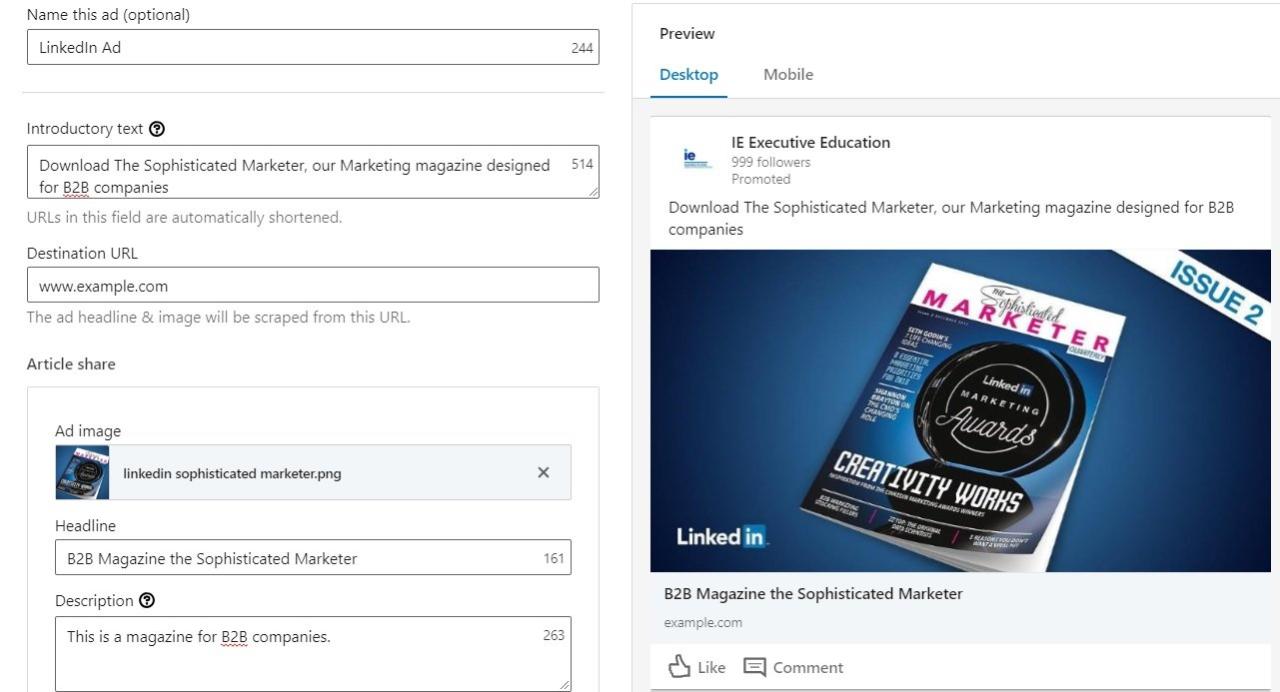
In conclusion, LinkedIn sponsored content targeted advertising solutions provide a powerful avenue for businesses to achieve their objectives. By understanding the diverse formats, refining targeting strategies, optimizing content for desired outcomes, and meticulously analyzing campaign performance, businesses can effectively leverage LinkedIn’s professional network. This comprehensive approach allows companies to maximize their reach and impact within the professional landscape.
